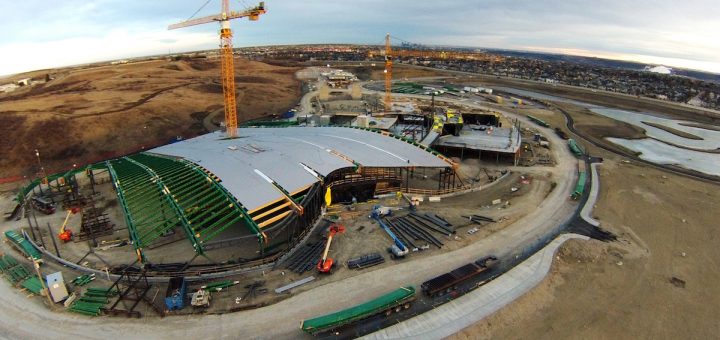What to know before you drone

How Canada’s new drone regulations are impacting recreational and academic pilots
By Brett Luft, Web Editor
Canada’s newest unmanned aircraft regulations may put a damper on those looking to pick up a drone this summer.
The March 2017 unmanned aircraft regulations offer a fresh take on Canada’s old laws that predated modern drone technology. While some of the laws are beneficial to public safety — such as the laws regarding forest fires — others restrict the full potential of even the most basic drones available on the market.
The DJI Phantom 3 Standard, for example, is one of the most inexpensive options to new owners and has advanced software to prevent crashing into obstacles. But, under Canada’s new restrictions pilots have to fly more than 75 metres away from any object — which becomes a problem when trying to take photos of trees or buildings.
A full out ban is also imposed on drones flying at night, meaning photography enthusiasts will be unable to get that aerial shot of the Calgary Tower lit up on a clear evening.
While the new regulations seem like total restrictions, the Government of Canada website has been updated to offer further clarity for non-recreational pilots.
A change of winds
These online complications were experienced first-hand when I picked up my DJI Phantom 3 to use for education purposes. As a journalism student, I thought it would be pretty slick to have some b-roll footage shot from a bird’s eye view.
But when I went to look into the restrictions for flying, the website was still set up with ancient guidelines. I couldn’t figure out how to request Transport Canada to let me use my drone for academic use.
The website was stuck in limbo between old unmanned aircraft laws and the real-world capabilities of modern drones. But as a result of updating the restrictions, Transport Canada’s website now clearly reflects how to gain permission for academic drone piloting.
The expectations for academic use are now fully fleshed out, and the process for gaining long-term certification is fairly straightforward.
Holding back on innovation
Law modernization is usually completed to make things more progressive, but the new drone laws feel like they’re really limiting what the market can do.
Drones have the potential to drive efficiency in new ways, offering the potential to truly help people by delivering medicine to bedridden patients or even having pizza delivered autonomously. But Canada’s laws feel like a step in the wrong direction for recreation use, and that’s truly a shame for those looking to get into the market in the near future.
The only silver lining for recreational pilots is the clarification surrounding penalties. Before the new restrictions, breaking regulations could cost as much as $25,000, but the new fine is $3,000. The $25,000 fine still exists, but has been restructured to only be applicable against corporations.
Do not fly your drone:
- Higher than 90 metres above the ground
- Closer than 75 m from buildings, vehicles, vessels, animals, people/crowds
- Closer than nine kilometres from the centre of an aerodrome (any airport, heliport, seaplane base or anywhere that aircraft take-off and land)
- Within controlled or restricted airspace
- Within nine km of a forest fire
- Where it could interfere with police or first responders
- At night or in clouds
- If you can’t keep it in sight at all times
- If you are not within 500 m of your drone
- If your name, address, and telephone number are not clearly marked on your drone.
Information courtesy of Transport Canada




